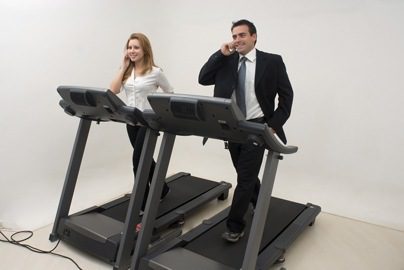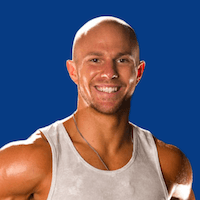How the heck did we get here, and what are we doing to fix it?
As athletes and clients continuously trickled into my gym with shockingly similar orthopedic presentations, independent of their acute injuries and sport specific specialty, it became clear that there were some predetermining factors that led them down a path to their orthopedic demise.
Here are the three leading candidates that have contributed to America's orthopedic problems, and how systemically fixing this problem may be easier than we think.

1. The Deterioration of Posture
The new American workplace is a largely sedentary, cubicle-infused office cookie cutter. In fact, office workers are now presenting with higher workers compensation numbers than the hard working laborers that actually constructed these buildings. How the times have changed!
This has led to workplace risk management professionals spending upwards of $3k on adjustable sit-to-stand desks for employees hit hard by the painful postural bug.
However, poor posture knows no bounds - and if your standing posture sucks too, you're still in trouble.
The Fix
There is no magic pill for fixing posture. You can't corrective exercise your way into standing tall and strong. It just doesn't work that way.
You know those 20 years of slouching over at your desk, playing on your phone and taking better care of the damn dog than you do yourself? That kind of deeply routed postural dysfunction isn't something that a few sets of 10 on banded external rotations your physical therapist gave you is going to take care of.
Well, maybe it will, but you would need to practice that movement four hours a day for the next 20 years to even out that horrendous posture.
First thing's first. Be cognizant of the position of your body every waking second of the day. For the matter, be aware of your sleeping positions as well, we spend enough time in bed to warrant some investigation don't you think?
Fix your standing posture, remediate your sitting posture. Just be aware. Once you've mastered these basics, then and only then do I want to hear about the addition of corrective movements or exercises. Only after you have laid down the foundation will you be able to progress, with no foundation, you're stuck in a vicious cycle to injury.
Reduced Pull/Push Training Ratios
On a more positive note, posture and orthopedic health can generally be improved through properly constructed pull to push training ratios.
Even for the most niched program, a ratio of 1:1 push to pull needs to be employed throughout the total volume of a set program. Keep in mind, that 1:1 pull to push ratio should really only be adopted by the highest level athletes that have concrete goals that need to be achieved through precise and detailed measures.
Most recreational lifters, the type tat just wants to look good naked, should bump that ratio up to around 2:1. So two pulls from the floor for every rep spent on the bench press. Can you stomach that?

An Utter Disregard for Good Movement
It's been said that the success of any type of physical program is primarily dependent on one single factor: exercise form.
Form has halted the physical progression of some of the world's best athletes. And it's been responsible for its fair share of otherwise preventable injuries. Why is it so hard to practice good form, master movements, and progress loads according to your current physical capabilities?
Ego gets in the way. We want everything yesterday without putting a drop of effort into working to achieve it -- the world of fitness and training is no exception.
Do doctors jump straight to cutting people open the second they receive their acceptance letter to start up medical school? I don't think so. So why is it acceptable to just load a 45-pound plate onto each side of an Olympic bar and start "snatching?"
The Fix
Preparation,
practice,
and persistence
are three attributes that will seldom let you down. Take a step back to evaluate your goals, your current skill and knowledge base, and devise a plan to work towards building a foundation. Cold fact of reality, but to straighten out, that's sometimes what people need.
All other variables in your health and fitness can be right on point, but if you persist to fake your way through your workouts, meals or life, you're sure to falter. Step up, be a grown up and start building that foundation.











